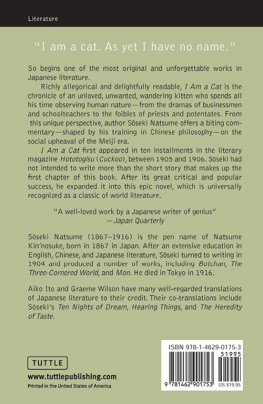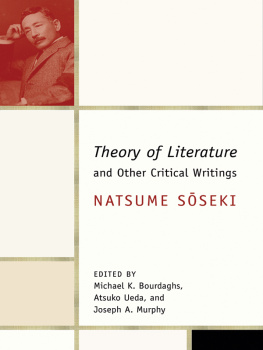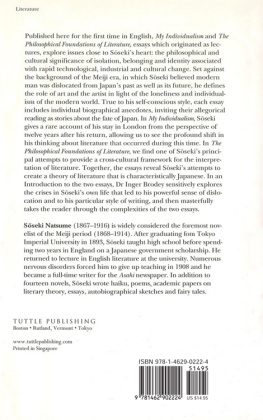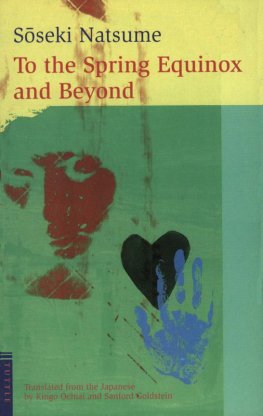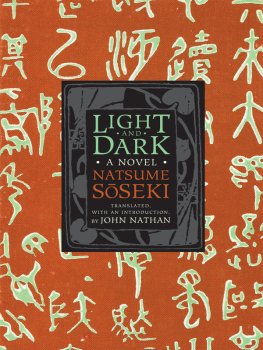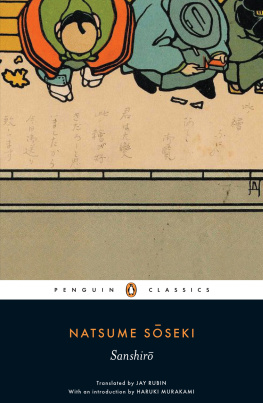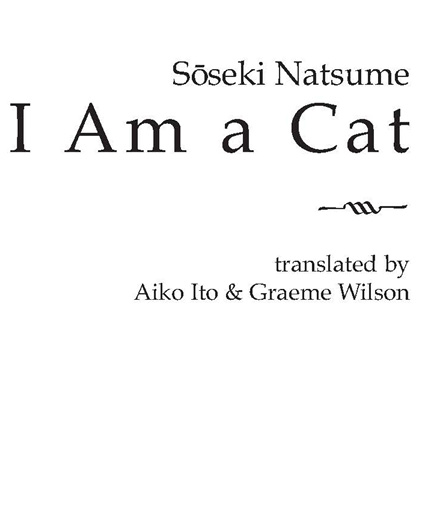
Published by Tuttle Publishing, an imprint of Periplus Editions (HK) Ltd. Originally published in three volumes by Tuttle Publishing in 1972 (Vol. I), 1979 (Vol. II), and 1986 (Vol. III). Volume I was originally published in Japan by the Asahi Shimbun Publishing Company in the Japan Quarterly, Vol. XVII, No. 4, and Vol. XVIII, Nos. 1 and 2. Chapter I of Volume II was originally published in Japan by the Asahi Shimbun Publishing Company in the Japan Quarterly, Vol. XII, No. 4.
www.tuttlepublishing.com
Copyright 1972, 1979, 1986, 2002 (compilation) by Aiko Ito and Graeme Wilson
All rights reserved. No part of this publication may be reproduced or utilized in any form or by any means, electronic or mechanical, including photocopying, recording, or by any information storage and retrieval system, without prior written permission from the publisher.
Library of Congress Catalog Card Number: 2002100535
ISBN 978-1-4629-0175-3
Distributed by:
North America, Latin American & Europe
Tuttle Publishing
364 Innovation Drive
North Clarendon, VT 05759-9436 U.S. A.
Tel: 1 (802) 773-8930
Fax: 1 (802) 773-6993
info@tuttlepublishing.com
www.tuttlepublishing.com
Japan
Tuttle Publishing
Yaekari Building, 3rd Floor
5-4-12 Osaki, Shinagawa-ku
Tokyo 141-0032
Tel: (81) 3 5437-0171
Fax: (81) 3 5437-0755
sales@tuttle.co.jp
www.tuttle.co.jp
Asia Pacific
Berkeley Books Pte. Ltd.
61 Tai Seng Avenue, #02-12
Singapore 534167
Tel: (65) 6280-1330
Fax: (65) 6280-6290
inquiries@periplus.com.sg
www.periplus.com
16 15 14 13 12 11 10 20 19 18 17 16 15 14
Printed in the United States of America
Tuttle Publishing is a registered trademark of Tuttle Publishing, a division of Periplus Editions (HK) Ltd.
contents
INTRODUCTION
S SEKI NATSUME is the pen name of Kinnosuke Natsume (1867- 1916), the eighth and youngest son of a family of minor town-gentry. The familys hereditary occupation as ward-chiefs in Tokyo under the Tokugawa shogunate disappeared with the Meiji Restoration of 1868, and thus they fell upon hard times, yet Sseki received the compulsory modern education, both primary and at middle school level, which had been introduced in 1872.
In his mid-teens he switched to a private school for Chinese studies and, though upper-class tradition regarded literature as no more than a civilized diversion, he began to toy with the idea of adopting it as a working profession. However, extensively educated in both the Chinese and the Japanese literary traditions, Sseki recognized early on the importance of English to any senior career under the westernizing influence of the restored regime and, specifically, to the entry requirements of Tokyo Imperial University-then the only university in the capital. Hoping to become an architect, he entered that universitys Department of Engineering in 1881, but he soon transferred to the Department of Literature that same year. In September 1890, Sseki joined the Department of English Literature as a loan-scholarship student of the Ministry of Education.
The English department, founded in 1888, had produced only one previous graduate, a student of the first year who became a customs inspector in Shanghai. Sseki graduated in July 1893 and then briefly enrolled as a postgraduate student. He applied unsuccessfully for a post as a journalist with the English-language Japan Mail in Yokohama and taught for a time at Tokyo Normal College. ln 1895 he suddenly left Tokyo to become a provincial teacher- first in Shikoku (where his university friend, the haiku poet Masaoka Shiki, resided) and later, in 1896, at Kumamoto in Kyushu. There, by formal arrangement, he married Nakane Kyoko, the eldest daughter of the chief secretary of the House of Peers. In 1900 the Ministry of Education sent him on a miserable scholarship to London University. For two unhappy years in London, he seems to have done nothing but read an almost incredible number of books on every conceivable subject and, at the same time, make himself an authority on eighteenth-century literature. His only social contacts with the British appear to have been a weekly private English lesson with W J. Craig-subsequently the editor of the Arden Shakespeare --and a single tea party given in Dulwich by the wife of a missionary whom he had met on the ship bringing him to England. It is, therefore, perhaps not surprising that Sseki formed a poor opinion of English social life and that back in japan he was widely rumored to have gone mad.
In 1903 he returned to Tokyo and, shortly thereafter, in fulfillment of the terms of his London scholarship, served four years as a lecturer in English literature at Tokyo Imperial University. During this period he began writing. He had formed various useful literary friendships while he was a student at the university, and, though his close friend Shiki had died in 1902, the editorial board of the influential literary magazine Hototogisu (Cuckoo) , which Shiki had founded, still included many men who were Ssekis personal friends.
Takahama Kyoshi--one of the editors of Hototogisu , but not a close friend of Sseki-allegedly asked Soseki to write something for the magazine. Accordingly, during 1904, Sseki produced his first short story, which he called I Am a Cat . Takahama read it, told Sseki that it was no good, and, when Sseki asked for an explanation, provided comment in considerable detail. Today it seems ludicrous that one of the three or four best novelists ever to write in japanese should have been glad to receive guidance from such a relatively insignificant figure asTakahama. However, we must remember that, at that time, Takahama was a wellknown, well-established, and very influential editor (a man with the sensitivity to divine Ssekis promise and the kindness to give him guidance), while Sseki was a virtually unknown young man who had just produced his first, and really rather odd, short story. In any event, Sseki appears to have accepted the advice (though he later stated that he could not remember what that advice had been) and rewrote the story. Takahama liked the second version and published it in the January 1905 issue of Hototogisu .
Sseki had not intended to write more than that single short story, which is now the first chapter of a very long book, but Takahama was so pleased with its immediate success that he persuaded Sseki to write further installments. The subsequent ten chapters that make up I Am a Cat were thus successively published in Hototogisus issues for February, April, June, July, and October 1905 and for January, March, April, and August 1906. The seventh and eighth chapters appeared together in the issue for January 1906. This somewhat curious account of the origin and development of Ssekis famous novel rests primarily upon Takahamas testimony in his later book Soseki and I , but there is no reason to doubt that it is substantially correct. The actual book of I Am a Cat was first published in three-volume form, the volumes appearing in October 1905, November 1906, and May 1907. The first single-volume edition was published in 1911.
Takahamas account of how this story came to be a novel explains the unevenness, even jerkiness, of the early parts of the book. Indeed, though the first chapter is adequately articulated into the total work, it is as clear from that chapters ending as from Ssekis own later remarks- When the first chapter appeared in Hototogisu , it was my intention to stop there -that he originally meant to write no more. There are, moreover, one or two minor points in that first chapter that an ungenerous critic might highlight as inconsistent with subsequent portions of the book. The second chapter, nearly the longest of them all, shows Sseki still feeling his way towards the right chapter length. He did not really hit his stride until the third chapter, which finally established the tone, length, and character of the remaining eight.
Next page
